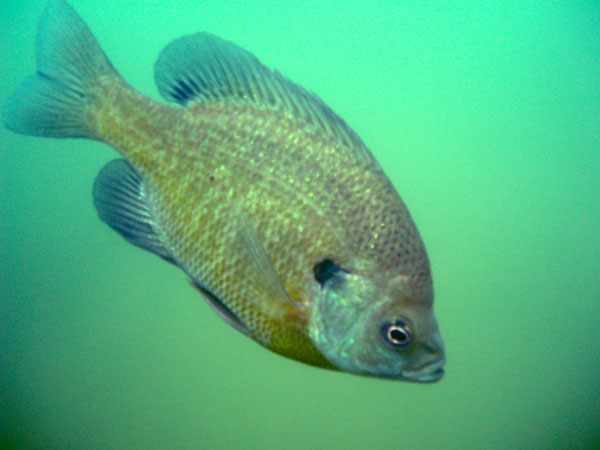The energy, or nutrient content, or your pond can impact water quality. In ponds where fish are not fed, the whole food chain is dependent on energy from the sun. Microscopic plants use the sunshine and produce the energy that eventually goes to the desirable sportfish species. If the water is muddy, the sun cannot penetrate and fish production will be greatly reduced. The two important factors contribute to the development of muddy pond are: The rate at which clay and silt is stirred up from the pond bottom or comes into the pond with rainwater; And the rate at which the clay and mud particles settle out of the water.
In some ponds clay and silt are constantly stirred up, but the pond stays clear because these particles quickly settle out and the water remains clear. Other ponds have very little disturbance or mixing, but the clay particles stay in suspension almost forever. Why the difference? Clay particles are small flakes with negative charges. They repel each other and alone are far too small to settle.
In ponds with moderate water hardness, there are many positively charged calcium and magnesium molecules. These molecules cause the clay particles to stick together in larger clumps that settle quickly. Some other particles that help clay settle come from the decomposition of plant material.
The most common ways that clay and mud are mixed into the pond water are that livestock watering in the pond, rain washing mud in from bare pond dams or plowed fields, wind action producing waves that erode pond banks, or large populations of bottom feeding fish like
bullheads, catfish or common carp.
The water quality conditions that slow clay settling are low hardness (low calcium and magnesium levels), low pH (acidic) water, and new ponds with very little algae or organic material.
The secret to clearing a muddy pond is to prevent as much clay mixing as possible and changing the water chemistry to speed the settling of clay particles. Limiting livestock access, planting grass, preventing
erosion with plants or gravel and removing populations of bottom feeding fish reduce mixing. Ideally, a 100-foot-wide vegetated buffer strip to clean incoming runoff water should surround ponds. Excluding livestock from the pond is difficult, but if mud problems are severe, there are several possible approaches.
Fence the pond completely. If it critical for watering animals, install a gravity-fed watering trough below the pond. Alternatively, fencing cattle out of the parts of the pond that are problematic may help, especially areas with earthen fill. In any case, eliminating the source of the mud before any treatment is applied to the pond is very helpful. Chemical methods to clear ponds will remove existing mud particles but do not have a residual effect and cannot prevent ponds from
becoming muddy again.
At the same time you are dealing with clay mixing, contact your local Extension agent and have your water tested for pH, hardness and alkalinity. If the pond has a pH below 8 and hardness below 50 ppm,
add 1 to 2 tons of crushed agricultural limestone per surface acre of pond area. Spread the limestone out as widely as possible to speed it dissolving (in areas with acidic soils, it may be best to lime the pond bottom before filling). The limestone dissolves releasing calcium and magnesium ions that settle the clay within a few weeks. Once the pond is cleared and algae begin to grow, clay problems are unlikely to redevelop.
